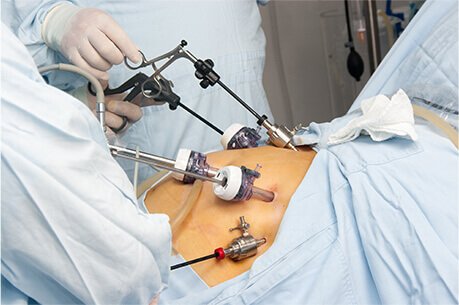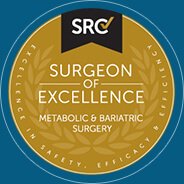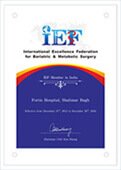
Essential Shopping and Dining Tips for Bariatric Surgery Success
When you undergo bariatric surgery your stomach size has been reduced to about 70% – 80% of its size, and some part of your small intestine may or may not be bypassed. Due to this alteration, you need to be more planned of what, how much, and how you eat and drink. Your focus should be on nutritious protein-based foods and staying well-hydrated. You’ll be able to tolerate some foods better than others as your digestive system shifts. After weight loss surgery, you also need to be cautious while doing grocery shopping in the market or while ordering food for yourself at a restaurant. Below are some guidelines to help you out, read carefully and enjoy eating………
The Grocery Store:
Think about how most grocery stores are designed. Walk through your grocery store. Look at the outer aisles. What do you see there? Fruits and vegetables, meat/fish, cheese, milk, eggs, other dairy, items…all the good food…the whole foods. These are the foods that should be in your refrigerator. Now look into the inner aisles…quick dinners, frozen foods, processed foods, canned items, sauces, salad dressings, chips, crackers, and candies. These are the “bad foods”. Learn to shop primarily in the outer aisles, and make sure you choose foods from all four food groups such as:
- Proteins eggs and poultry, meat & meat products, pulses and legumes, and milk and milk products
- Healthy carbohydrates oats, quinoa, wheat flakes, bran flakes, muesli, cornflakes, multigrain bread, broken wheat
- Fresh Vegetables all seasonal, fresh vegetables such as soups, salads, boiled, sautéed or cooked
- Fresh Fruits like apple, papaya, guava, pear, orange, pomegranate, sweet-lime, melons, plums, peaches and berries
to ensure a balanced meal. Never go to the grocery store hungry, plan meals ahead of time, and always make a list.
The shopping list:
Protein Foods (meats, poultry, fish, eggs, legumes)
Do not eat the skin, as it is pure fat. Your leanest choices are skinless chicken breast, turkey (white meat, no skin), ground chicken and turkey (white meat only, no skin added), and duck (no skin).
Fish and Seafood
All fish and seafood provide high-quality protein. Anything goes in this area.
Eggs
Eggs are a good source of protein; just remember that the yolk is high in fat and cholesterol. If you eat them on occasion, do not worry. However, if you eat them daily, go for just the whites and 2 yolks in a week.
Pulses & Legumes
These supply protein, calcium, iron, zinc, magnesium, and B vitamins! They are the only high-protein foods that also supply fiber. Sources are split peas, black beans, chickpeas, rajma, black chana, red beans, and lentils; just to name a few.
Fresh Vegetables
Vegetables are naturally low in calories and fat. They also provide an array of vitamins, minerals, and fibre. You add fat and calories in the way you prepare them. Try steaming, grilling, stir-frying, or boiling. Watch adding butter, high-fat, and high-calorie condiments, as they will increase the fat and calorie content. Frozen varieties without added butter or cream sauce are also an acceptable choice.
Fruits
Fruits are a great, quick, nutritious snack or dessert. Stay away from dried fruit as it is very high in sugar. Stay aware of canned fruit and frozen as many are packed with added sugars.
Dairy Products
Dairy products are loaded with calcium, protein, A, B, and D vitamins. There are many low-fat varieties in the market. Try them. If you do not like one brand, try another. The taste will vary. Some suggestions: skim or 1% milk, low-fat cheeses, reduced-fat sour cream, and low-fat cottage cheese.
Grains (whole)
Do not be fooled by “wheat bread”. It is a mixture of white and whole-wheat bread. The first ingredient should say “whole grain”. Stick with the whole grain types like multi-grain, oat bran, cracked wheat, and oat.
Pasta and Rice
Remember they are high in carbohydrates! Stick to the whole grain varieties.
Restaurant Guide
Many restaurants today offer delicious, low-fat meals. Ask yourself. How is the food prepared? Go for the grilled, broiled, baked meats. Vegetables should be steamed or grilled. If the menu does not indicate the cooking techniques, ask the waitperson if they will describe the item for you.
These tips will assist you in making good, smart, healthy choices, even before you order:
- If you are familiar with the menu, decide on what you will order before arriving so that you are not tempted by ordering something unhealthy.
- If you are eating in a new place, take time and study the menu, looking for the healthiest choices.
- Ask the server to eliminate unhealthy additives, such as butter and creme sauces, substitute high-fat foods, and choose low-fat poultry.
- Ask for the skin to be removed from the poultry.
- Ask the server to eliminate the bread basket.
- Skip dessert and order fresh fruit or sorbet made from sweetened water with flavoring – typically fruit juice, fruit puree or honey. Avoid sorbets made from liquor or wine.
- Do not overeat. Take home the leftovers. Eating out does not mean you can forget to eat healthy!!
Bariatric surgery is a lifelong commitment, each day you need to practice it to stay healthy and in shape. Weight loss surgery works well if you as a patient understand and fulfill your responsibilities to make it a success.
Hope these tips help all my dear patients to pick and choose from grocery stores and enjoy a dine-out.
Enjoy eating, enjoy life, stay healthy!!





